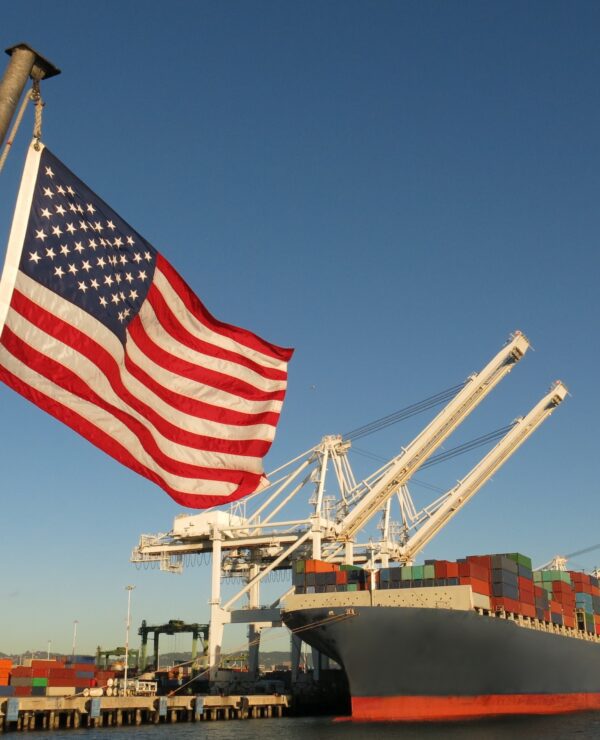Authors
Partner, Competition, Trade and Foreign Investment, Toronto
Partner, Competition, Trade and Foreign Investment, Toronto
Associate, Competition, Trade and Foreign Investment, Toronto
Associate, Competition, Trade and Foreign Investment, Toronto
Associate, Competition, Trade & Foreign Investment, Toronto
Associate, Competition, Trade and Foreign Investment, Toronto
Associate, Competition, Trade and Foreign Investment, Toronto
Osler’s International Trade Group will be analyzing and addressing new developments regarding the U.S. and Canadian tariffs on an ongoing basis. This is an evolving issue. This article is current to the date and time of publication.
On February 13, 2025, U.S. President Trump issued a “Reciprocal Trade and Tariffs” memorandum (the Reciprocal Trade Memo) signaling the United States’ intent to impose new tariffs and possibly other trade-restrictive measures on its trading partners, equivalent to tariffs or non-tariff barriers in those other jurisdictions. The objective of the U.S. policy is to counter what the United States considers “non-reciprocal trading arrangements” that are unfair to U.S. commercial interests. While the Reciprocal Trade Memo does not itself impose tariffs, it sets the stage for a “Fair and Reciprocal Plan” (the Reciprocal Trade Plan) for new tariffs or other measures against, potentially, every U.S. trading partner, including Canada.
This Update explains the Reciprocal Trade Memo, the practical challenges the Plan is likely to face, how Canada could be affected and the implications of the Reciprocal Trade Memo for the international trading system.
What ‘non-reciprocal trade arrangements’ are targeted?
The Reciprocal Trade Memo takes an expansive view of “non-reciprocal trade arrangements.” They include
- tariffs on U.S. goods that are higher than those the U.S. imposes on similar goods
- internal taxes imposed by other countries, including value-added taxes
- non-tariff regulatory barriers, including sanitary and phytosanitary measures and technical regulations
- government procurement measures
- inadequate intellectual property protections
- digital trade barriers
- exchange rate policies and practices
- wage suppression
- a catch-all for “any other practice” that imposes what the United States considers an unfair limitation to market access or fair competition
Timing of the Plan
The Reciprocal Trade Memo does not establish a specific timeframe for new tariffs or other measures to do so. Rather, it directs that, after submission of the reports already mandated by President Trump’s America First Trade Policy Memorandum — most of which, including those focused on Canada, are due on April 1, 2025 — various U.S. government departments and agencies are to investigate harms posed by any “non-reciprocal trade arrangements” and submit “proposed remedies” that would become part of the Reciprocal Trade Plan.
The timing of any resulting tariffs or other measures will depend in part on the statutory instrument used to impose them. For example, measures pursuant to the International Emergency Economic Powers Act — the statute used for the 25% tariffs on Canada and Mexico that have been temporarily paused — require only a presidential declaration and executive order and, therefore, can be imposed quickly. However, the processes could take many months for new tariffs under section 301 of the Trade Act of 1974 or section 232 of the Trade Expansion Act of 1962. (The latter is the instrument used by President Trump in his first administration for the steel and aluminum tariffs that, as we previously discussed, he has now extended to Canada and other countries that had been exempted from them.)
Challenges with implementation
Investigating the extremely broad range of “non-reciprocal trade arrangements” as contemplated by the Reciprocal Trade Memo and then determining the appropriate equivalent tariffs or other measures would itself be an enormous, bordering on insurmountable, undertaking. Equivalent tariffs would then mean creating new and regularly evolving tariff schedules for each trading partner (potentially over 150 such schedules), which would then impose massive operational challenges for U.S. businesses and other importers in determining tariff liabilities, plus corresponding enforcement challenges for U.S. authorities.
These realities offer good reasons to be skeptical that a Reciprocal Trade Plan as envisaged by President Trump will ever come to fruition. A stronger possibility is that the United States will target a much smaller number of politically high-value “non-reciprocal trade arrangements” in select countries.
How could Canada be affected?
Canada could be one such country targeted. While very few U.S. goods are subject to Canadian customs duties, a White House-issued “Fact Sheet” accompanying the Reciprocal Trade Memo specifically identifies Canada’s and France’s digital services taxes as measures that could warrant action under the Reciprocal Trade Plan. The Reciprocal Trade Memo also identifies value-added taxes as “unfair, discriminatory, or extraterritorial taxes imposed by our trading partners”, making the GST/HST a potential target if the U.S. administration determines that GST/HST compliance places an undue or unusual burden on U.S. importers (especially non-resident importers into Canada).
The United States’ repeated erosion of the international rules-based trading system
If the tariffs proposed under the Memo were to come into effect, this would represent a seismic shift in the long-established international rules-based trading system. The contemplated reciprocal tariffs undermine the GATT (a key agreement in the Marrakesh Agreement establishing the World Trade Organization); the WTO; as well as bilateral preferential trade agreements like the Canada-U.S.-Mexico Free Trade Agreement (CUSMA).
A simple but critical understanding anchors the multilateral trading system created after WWII: participating economies will negotiate to limit or “bind” their tariffs on goods to rates no higher than those they commit to in negotiations, and then further lower those bound tariff rates in subsequent negotiations. The schedules of participants’ bound tariff commitments have been the centrepiece of the General Agreement on Tariffs and Trade established in 1947 (GATT) since its inception.
A closely related commitment is the GATT’s “most-favoured nation,” or MFN, obligation: that each participant’s bound tariff rates apply equally to all other participants, regardless of those other participants’ own bound rates. Reflecting their importance, the obligations of MFN treatment and bound tariff rates are contained in the first two articles of the GATT.
The GATT accommodates regional or bilateral preferential trade agreements like the CUSMA, and the NAFTA before it, through an exception to the MFN obligation. Typically, participants in these preferential trade agreements further liberalize trade by agreeing to reduce their tariffs with each other to below their bound MFN rates, or to eliminating them entirely.
Now, under the Trump Administration, the U.S. is reneging on these longstanding commitments by executive order, and with seemingly little resistance from Congress. Tariffs appear to be the U.S.’ choice tool to compel compliance from its trading partners on any number issues — both trade-related and otherwise. This is a complete repudiation of the rules-based trading system, where the Trump administration appears willing to throw out the rules of the game. What remains to be seen is what rules will replace them, if any, or if other countries will be willing to play by the U.S.’ new rules.


